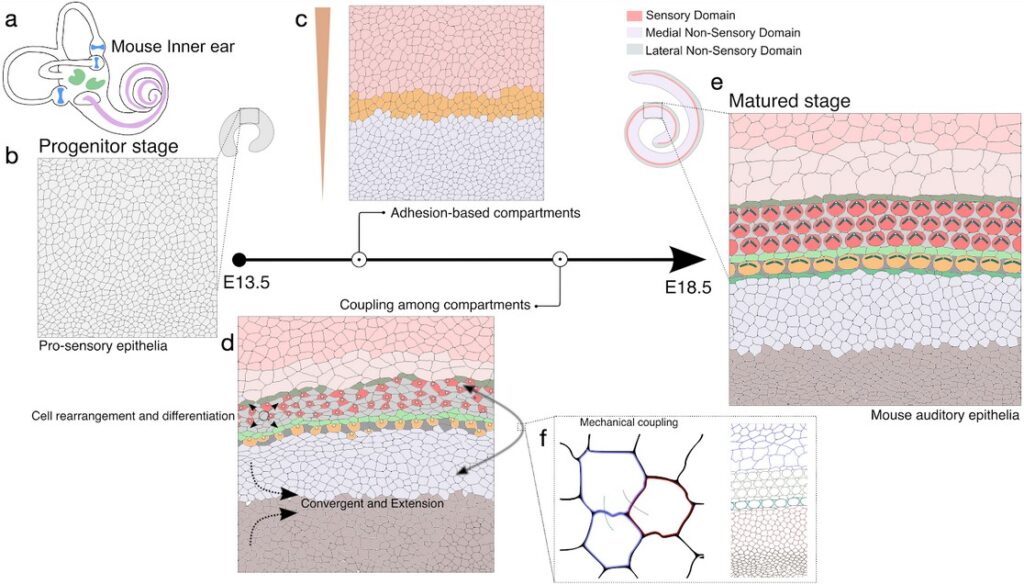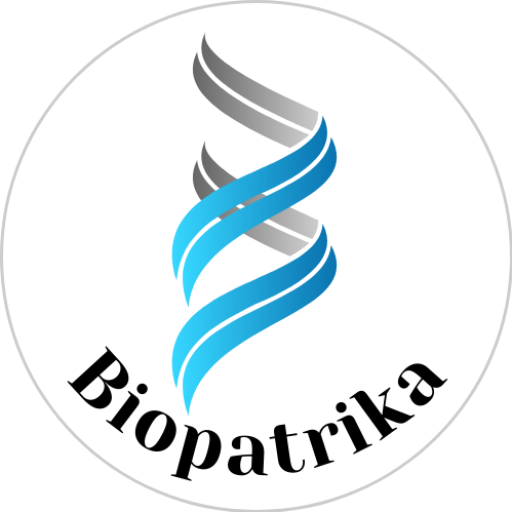Research Summary: Developing organs are divided into smaller compartments, providing autonomy during morphogenesis, while interactions between these compartments coordinate cellular organization, guiding organs to acquire physiologically relevant shapes and patterns.
Author interview

Anubhav Prakash is an early-career researcher interested in understanding how developing tissue uses biochemical and mechanical cues to form shapes and patterns, critical for their functioning.
Linkedin | Twitter | Instagram | Bluesky
Lab: Raj Ladher, NCBS, Bangalore
Lab social media: earlab.bsky.social
What was the core problem you aimed to solve with this research?
The functioning of every organ depends on the molecular and morphological characteristics of its cells and their organization within the organ. These organizations operate at two scales: a local scale, where different cell types organize with respect to each other, and a global tissue scale, where the overall shape and size of the organ are determined.
Although these are two distinct scales, during development, local cellular organization aligns with the tissue axis, and tissue shape is influenced by local cellular arrangements. A mechanism explaining the interaction between these two scales was the core research problem.
We identified the mouse auditory epithelium as a model system to investigate this integration. The auditory epithelium, also called the organ of Corti (OC), is spiral-shaped. Along the centre-to-peripheral axis, the OC has three broad domains: a sensory domain that transduces sound through polar mechanosensory hair cells (HCs) arranged in a mosaic with supporting cells, flanked by non-sensory domains on either side. These domains undergo coordinated cellular rearrangements, leading to a spiral cochlea containing planar-polarized HCs. This made the cochlea a compelling system to study our question.

How did you go about solving this problem?
We began by tracing the developmental trajectory of this organization. We found that at the onset of OC formation, cells were loosely arranged into a “three-domain architecture,” initiating a spiral shape. Over the next three days, cell division and cellular reorganization refined the OC into a mature spiral shape. These divisions and rearrangements, rather than disrupting organization, enhanced it.
Next, we used a mutant (Vangl2, looptail) in which the spiral shape was perturbed, but the organization was still maintained. This hinted at a mechanism preserving domain integrity during tissue shaping. Indeed, we found that adhesion molecules governing cell–cell interactions were differentially expressed across domains. When we misexpressed these molecules or weakened their interactions, we observed mixing of cells between domains. Each domain could also independently rearrange cells into distinct patterns.
This partially answered our question: an adhesion-code-based compartmentalization helps organize cells while the tissue is being shaped.
We then asked: How is the cellular organization of one domain coordinated with others? To explore this, we deleted Vangl2 in specific domains and analyzed the effects on neighboring and distant domains. We discovered that each domain interacts not only with adjacent domains but also with non-adjacent ones. We termed these interactions “Compartment Coupling.” Our results show that this coupling is non-linear and driven by a complex integration of local and tissue-scale mechanics.
We uncover how compartments integrate spatial and temporal cues across scales, showing how local cellular behaviours can influence large-scale tissue architecture. This principle of compartmentalisation and its coupling represents a fundamental design logic that underlies organogenesis across systems. — Prof. Raj Ladher
How would you explain your research outcomes (Key findings) to the non-scientific community?
The physiological function of every organ depends on its shape and how cells are organized within it. Our research showed that during development, organs are divided into smaller parts that are somewhat independent but also interact with each other. These interactions among the parts are essential for creating robust and reproducible organization.
What are the potential implications of your findings for the field and society?
This work encourages us to rethink organs as integrated assemblies of smaller subunits that interact mechanically and biochemically. We show that such interactions coordinate cellular behaviors across spatial and possibly temporal scales.
Organ malfunction and failure remain leading causes of mortality worldwide. We envision that our findings could contribute to engineering organ-like systems in vitro (“organs on a dish”) to test drugs for efficacy and side effects—paving the way toward improved medical care.
What was the exciting moment during your research?
For me, science is inherently fascinating. The entire process from idea to experiment is exciting. If I had to choose one moment in this project, it would be when we deleted Vangl2 in one domain and observed disruptions in a non-adjacent domain’s organization. That unexpected result was truly thought-provoking.
Paper reference: Prakash A, Raman S, Kaushik R, Manchanda P, Iyer AS, Ladher RK (2025) Coupling between spatial compartments integrates morphogenetic patterning in the organ of Corti. PLoS Biol 23(9): e3003350. https://doi.org/10.1371/journal.pbio.3003350
Explore more
🎤 Career – Real career stories and job profiles of life science professionals. Discover current opportunities for students and researchers.
💼 Jobs – The latest job openings and internship alerts across academia and industry.
📢 Advertise with BioPatrika – Reach the Right Audience, Fast!
🛠️ Services – Regulatory support, patent filing assistance, and career consulting services.




